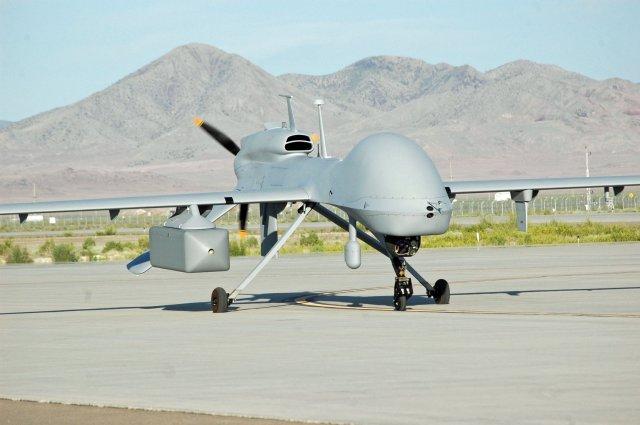OSD Staffs, Creates New Electronic Warfare Office
Posted on

An Army Grey Eagle testing a NERO jammer.
ALEXANDRIA: The executive committee on electronic warfare that Deputy Secretary Bob Work created last year is already reshaping the Pentagon bureaucracy. While the four-star officers and top civilians who make up the “EXCOM” itself have only met three times, executive committee co-chair Frank Kendall, undersecretary of acquisition, technology, and logistics, has created a new EW office and chosen a Senior Executive Service (SES) official — the civilian equivalent of a general — to run it.
The executive committee has hardly had time to make any significant impact on the 2017 budget due out next week, but it is getting institutional traction for 2018. While the EXCOM’s high-level leaders may come and go, especially with a new administration, a new staff office in the bureaucracy can endure forever.
“From an organizational standpoint, we are making changes, [but] they’re nascent, they’re very new,” Jay Kistler, the Pentagon’s director of Electronic Warfare & Countermeasures (EW&C), told reporters this morning. “The selection for the SES, Bill Conley” — formerly of DARPA — “happened about early December, maybe. It took a while to get the people.”
The Executive Committee is tremendously high powered. It’s chaired by Kendall, the Pentagon’s top buyer, and the Vice-Chairman of the Joint Chiefs of Staff, Gen. Paul Selva. Each service is represented by its senior civilian acquisition executive and its uniformed four-star vice chief. Since those are busy people with other things on their agenda, they naturally needed a supporting staff.
“We needed an office that could act as the secretariat for this, that could be the focal point for gathering that information,” Kistler told a National Defense Industrial Association breakfast this morning.
Electronic warfare is such a high priority because Russia, China, and other countries are catching up to, if not surpassing, America’s long-time advantages in jamming, spoofing, and detecting enemy radio and radars. The explosive growth of commercial wireless has filled the airwaves with new signals and the open market with new technology that hostile forces can repurpose.
“There are now hundreds more signals cluttering the battlespace. much more dynamic, more agile, more waveforms…such that they not easily detectable … by many of our systems,” said Kistler, who oversees a $10 million budget for experimenting with new technologies. “EW equipment is very costly, [so] we’ve got to find ways to achieve the mission and do more within the budget that we have.”
CORRECTION: The originally version of this article misspelled Mr. Conley’s name (as “Connelly”).
Subscribe to our newsletter
Promotions, new products and sales. Directly to your inbox.
